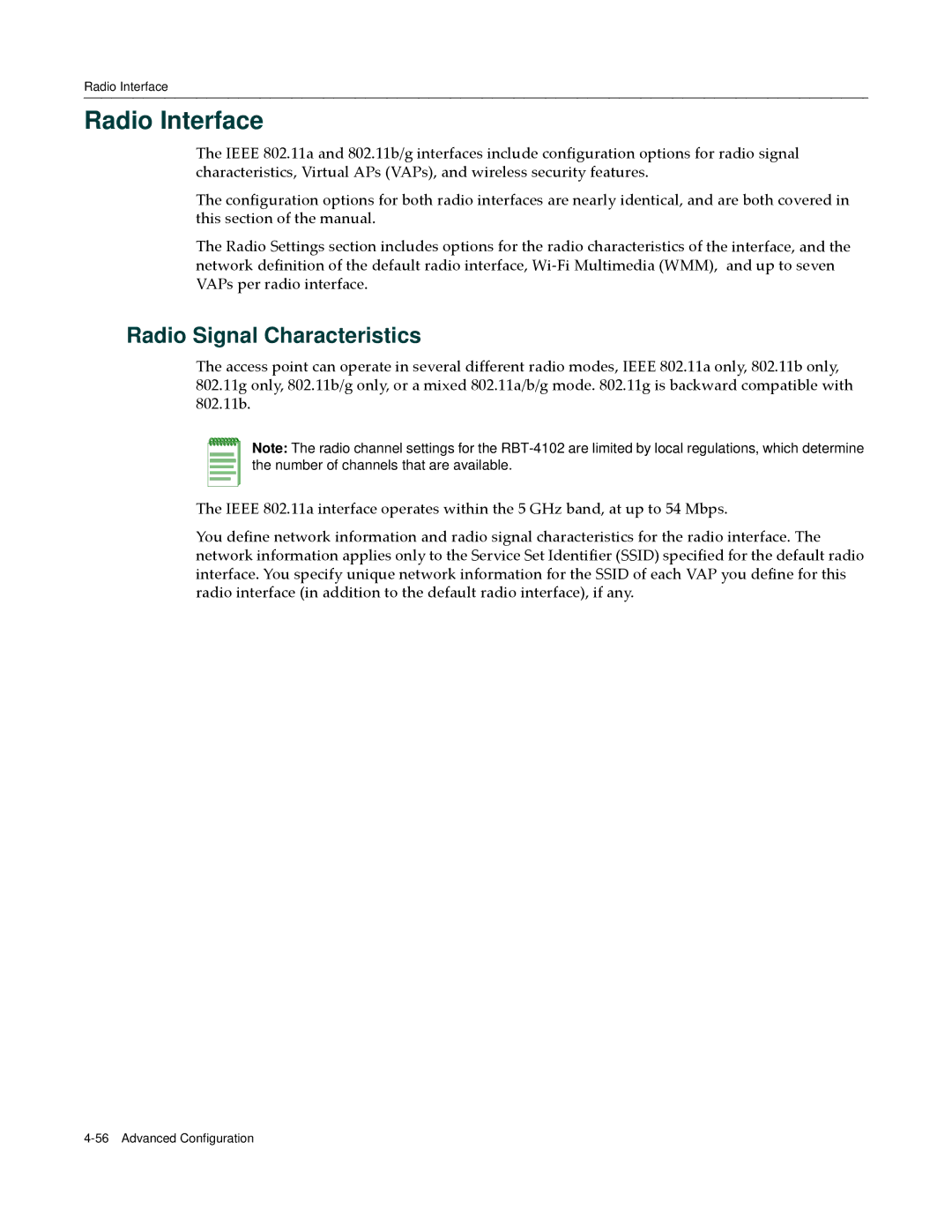
Radio Interface
Radio Interface
The IEEE 802.11a and 802.11b/g interfaces include configuration options for radio signal characteristics, Virtual APs (VAPs), and wireless security features.
The configuration options for both radio interfaces are nearly identical, and are both covered in this section of the manual.
The Radio Settings section includes options for the radio characteristics of the interface, and the network definition of the default radio interface, Wi‐Fi Multimedia (WMM), and up to seven VAPs per radio interface.
Radio Signal Characteristics
The access point can operate in several different radio modes, IEEE 802.11a only, 802.11b only, 802.11g only, 802.11b/g only, or a mixed 802.11a/b/g mode. 802.11g is backward compatible with 802.11b.
Note: The radio channel settings for the
The IEEE 802.11a interface operates within the 5 GHz band, at up to 54 Mbps.
You define network information and radio signal characteristics for the radio interface. The network information applies only to the Service Set Identifier (SSID) specified for the default radio interface. You specify unique network information for the SSID of each VAP you define for this radio interface (in addition to the default radio interface), if any.
